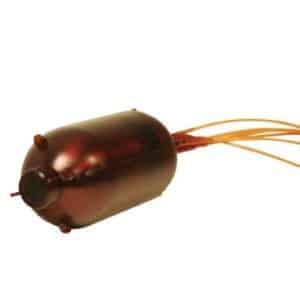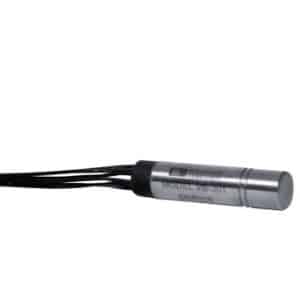Vector sensors measure the change in acoustic pressure and particle acceleration, associated with movement, in three orthogonal axes. The particle motion is described by displacement, velocity and acceleration, which are classified as vectors as each has a direction and a magnitude. A vector sensor is commonly used as an underwater listening device to determine the location of an underwater object by measuring the direction in which a sound wave is traveling.
Our vector sensor comprises four sensing elements in a single housing with a standard acoustic phase center. They are combined to produce a cardioid directivity pattern which provides approximately 4.8 dB improvement in the signal-to-noise ratio over a traditional omnidirectional pressure sensor.
Vector sensors measure the change in acoustic pressure and particle acceleration, associated with movement, in three orthogonal axes. The particle motion is described by displacement, velocity and acceleration, which are classified as vectors as each has a direction and a magnitude. A vector sensor is commonly used as an underwater listening device to determine the location of an underwater object by measuring the direction in which a sound wave is traveling.
Our vector sensor comprises four sensing elements in a single housing with a standard acoustic phase center. They are combined to produce a cardioid directivity pattern which provides approximately 4.8 dB improvement in the signal-to-noise ratio over a traditional omnidirectional pressure sensor.




